
Andrea Rosen Gallery, New York, 1994.

Andrea Rosen Gallery, New York, 1994.

Tillmans in 100 Gloucester Place, London W1U GHT.
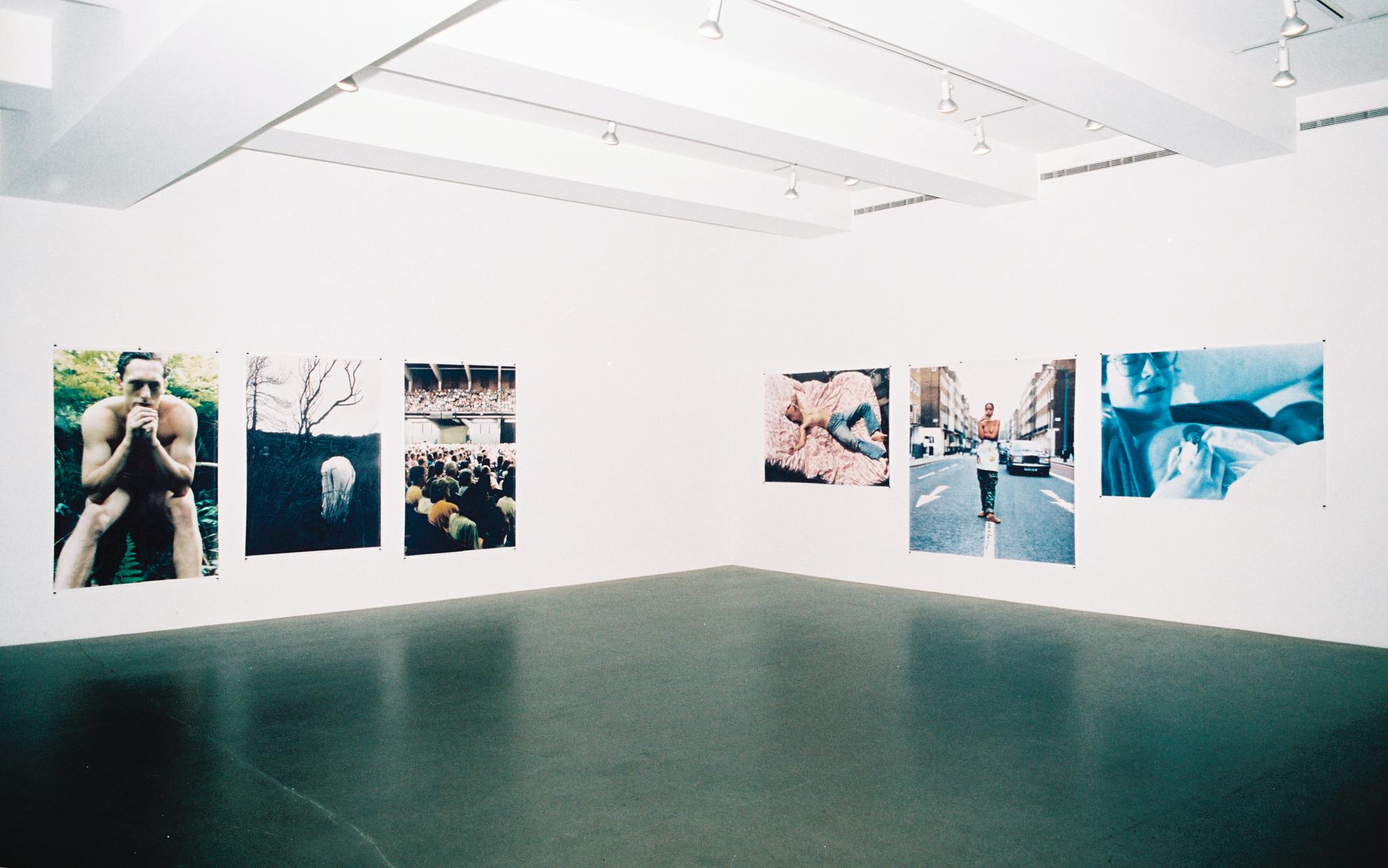
130 Prince Street, New York, NY 10012.
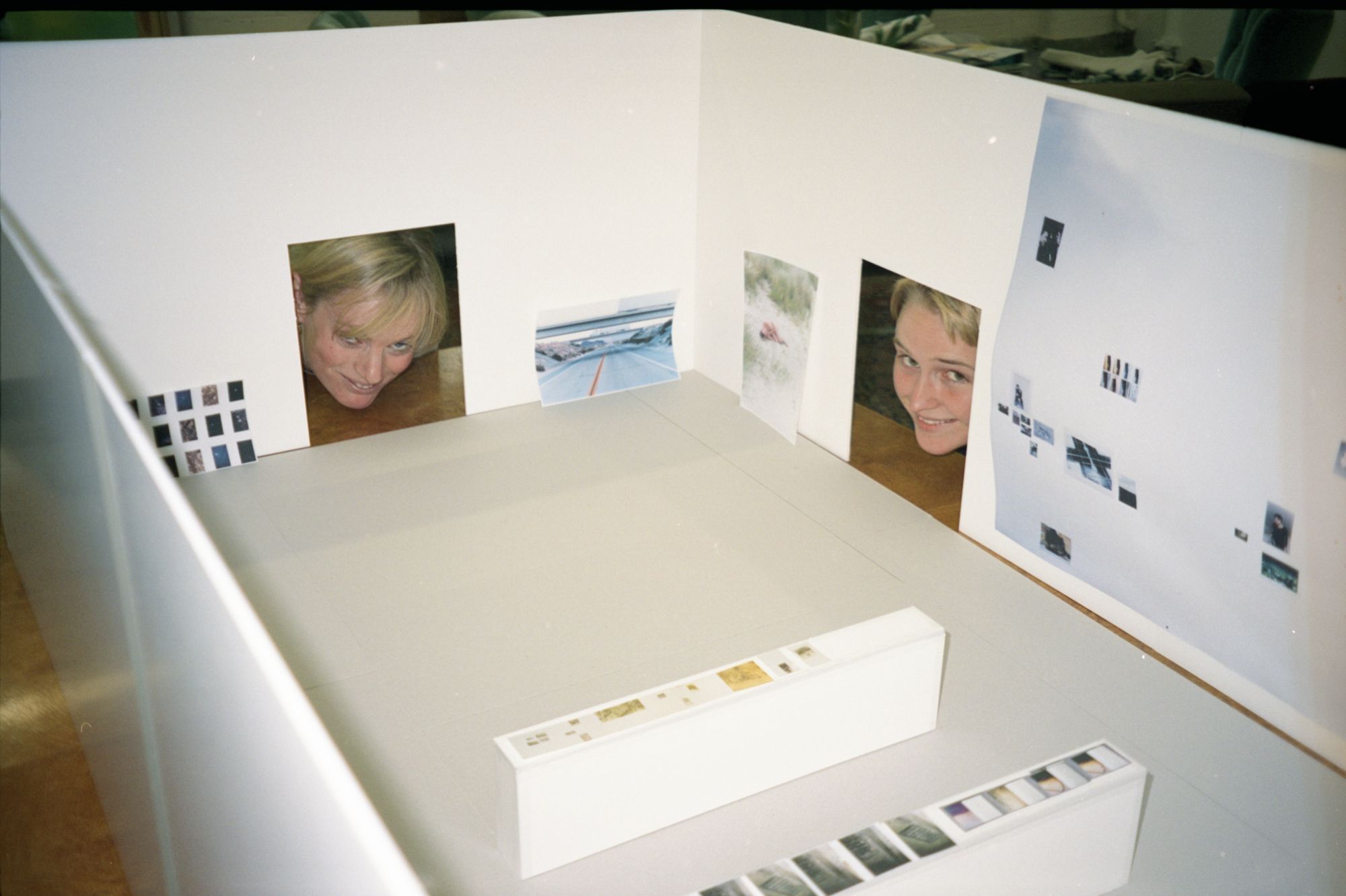
Turner Prize, Tate Britain, 2000 in 21 Herald St, London E2 6JT.
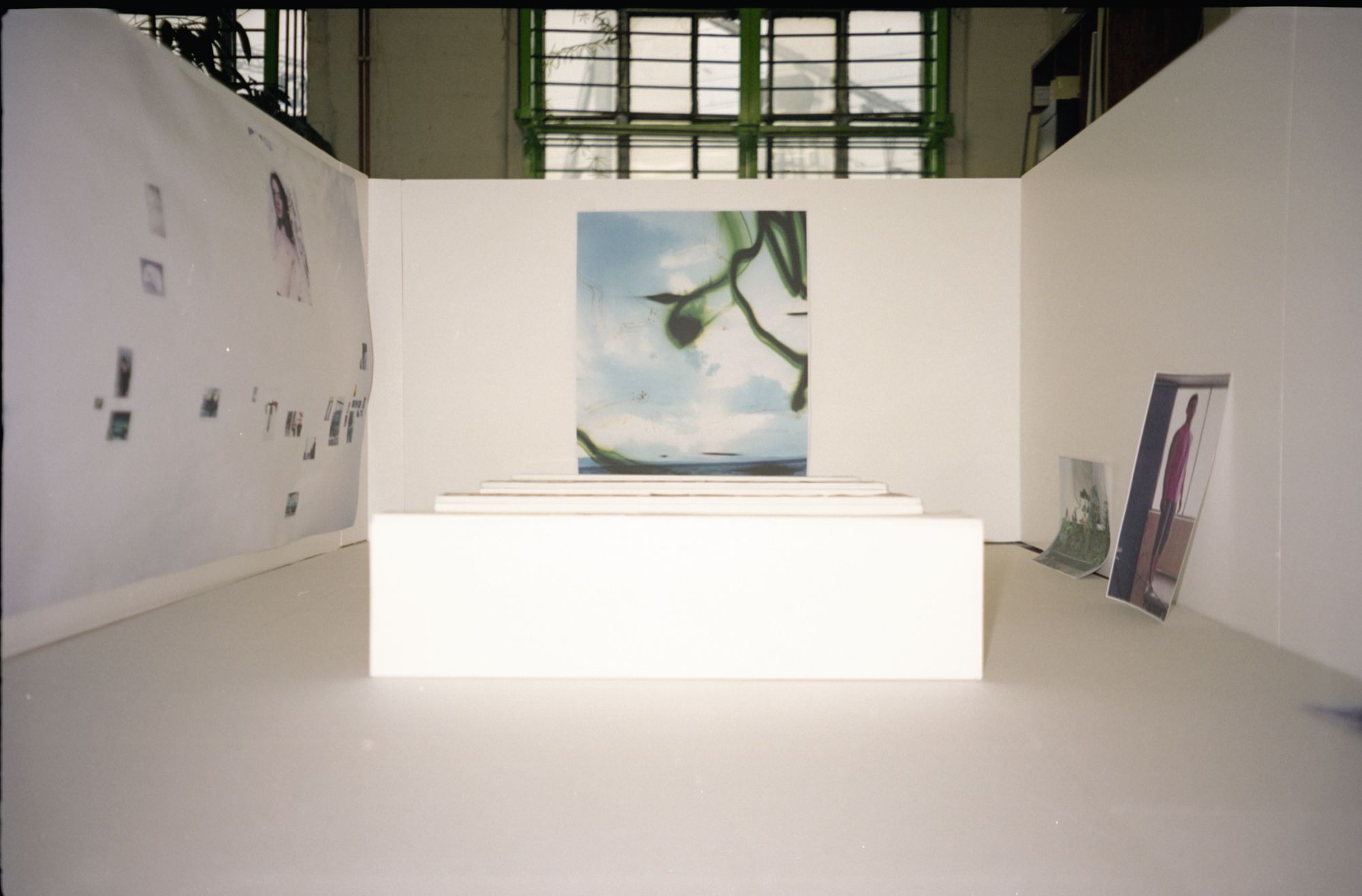
Turner Prize, Tate Britain, 2000 in 21 Herald St, London E2 6JT.

Millbank, London SW1P 4RG.
An image of television static from Wolfgang Tillmans’s 2014 End of Broadcast series hangs in the Panorama Bar at Berghain, the crown jewel of Berlin’s techno underground, while another from the same series can be found in the permanent collection of New York’s MoMA. In this way, ravers from all over the world, out of their minds on speed, are sucked into the photograph just the same as international Big Apple tourists. It speaks to how Tillmans’s work can collapse contexts, bridging the worlds of fine art, early 90s rave subculture, and queer communities going about their daily lives. And it’s not only in his photographic work that there is a political edge: via his foundation Between Bridges, German-born Tillmans has shown work by marginalized artists like AIDS activist David Wojnarowicz, and, in the wake of Brexit, has become a militant pro-E.U. campaigner. Ahead of his major MoMA retrospective this fall, the 53-year-old reflects on the meaning of photography, the limits of representation, his relationship to his home cities of Berlin and London, and why he takes pictures of things he doesn’t like.
Emmanuel Olunkwa: As a photographer, what is your relationship to art? Did you start out making work for a gallery context?
Wolfgang Tillmans: Yes. Two artistic sensations fascinated me as a young person. The first was art in galleries, museums, and certain church windows, which I experienced on school and family trips. The second was seeing pop-culture pictures in magazines and on video and record covers. I had this equal arousal — let’s call it that — from seeing art objects either as a spatial experience or on the printed page. And because art and magazines are conventionally recognized as very different contexts, it took me a few years in my early 20s to overcome a sense of anxiety and realize that both are part of my practice. Even though I started doing exhibitions a little earlier than I started making work for magazines, I embraced them both as equal parts of what I do. The fact that a magazine page can make its way into an exhibition, while something I make in the studio, set up for no other purpose than my own desire, can end up in a magazine, is magic. But the primary activity, what I’ve spent 80 percent of my time thinking about and doing, is working with art that has its place in some form of gallery space.
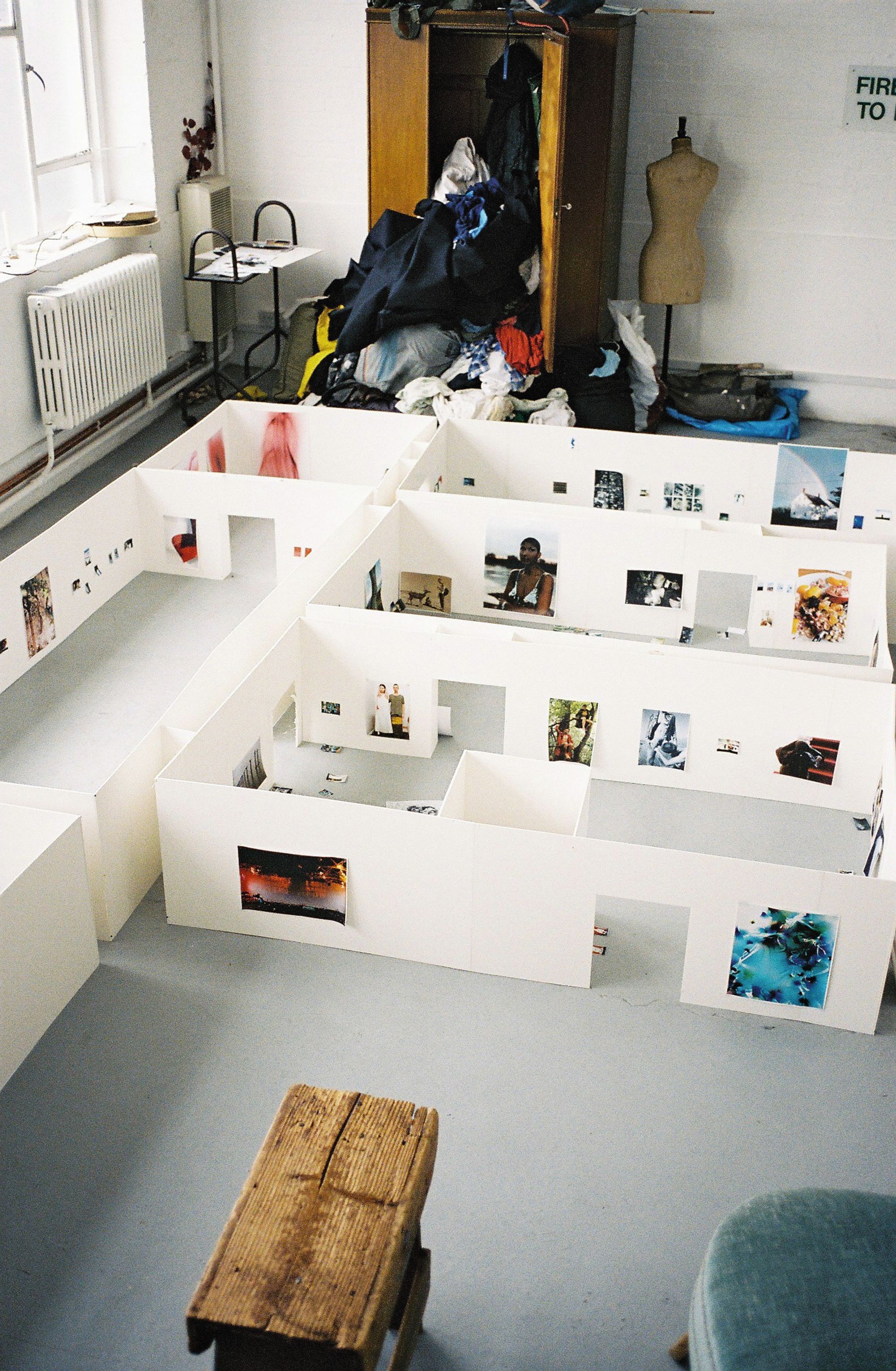
’if one thing matters, everything matters’ Tate Britain, London, 2003, at 223 Cambridge Heath Road, London E2 0EL.

Hirshhorn Museum & Sculpture Garden, Washington DC, 2007 in 223 Cambridge Heath Road, London E2 0EL.
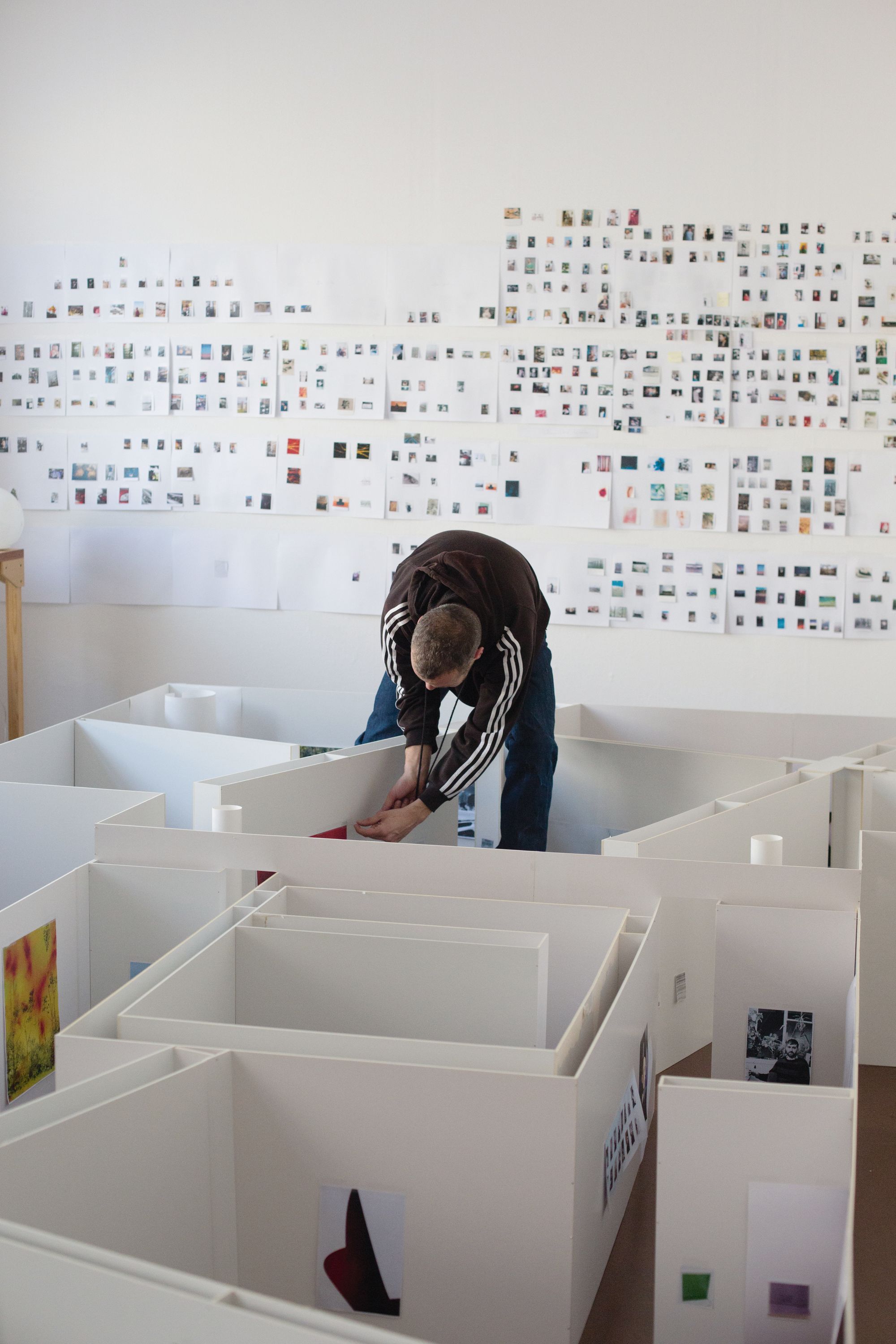
Tillmans in Prinzessinnenstrasse 2, 10969 Berlin.

Albertinum, 01067 Dresden, 2018 in 10969 Berlin.
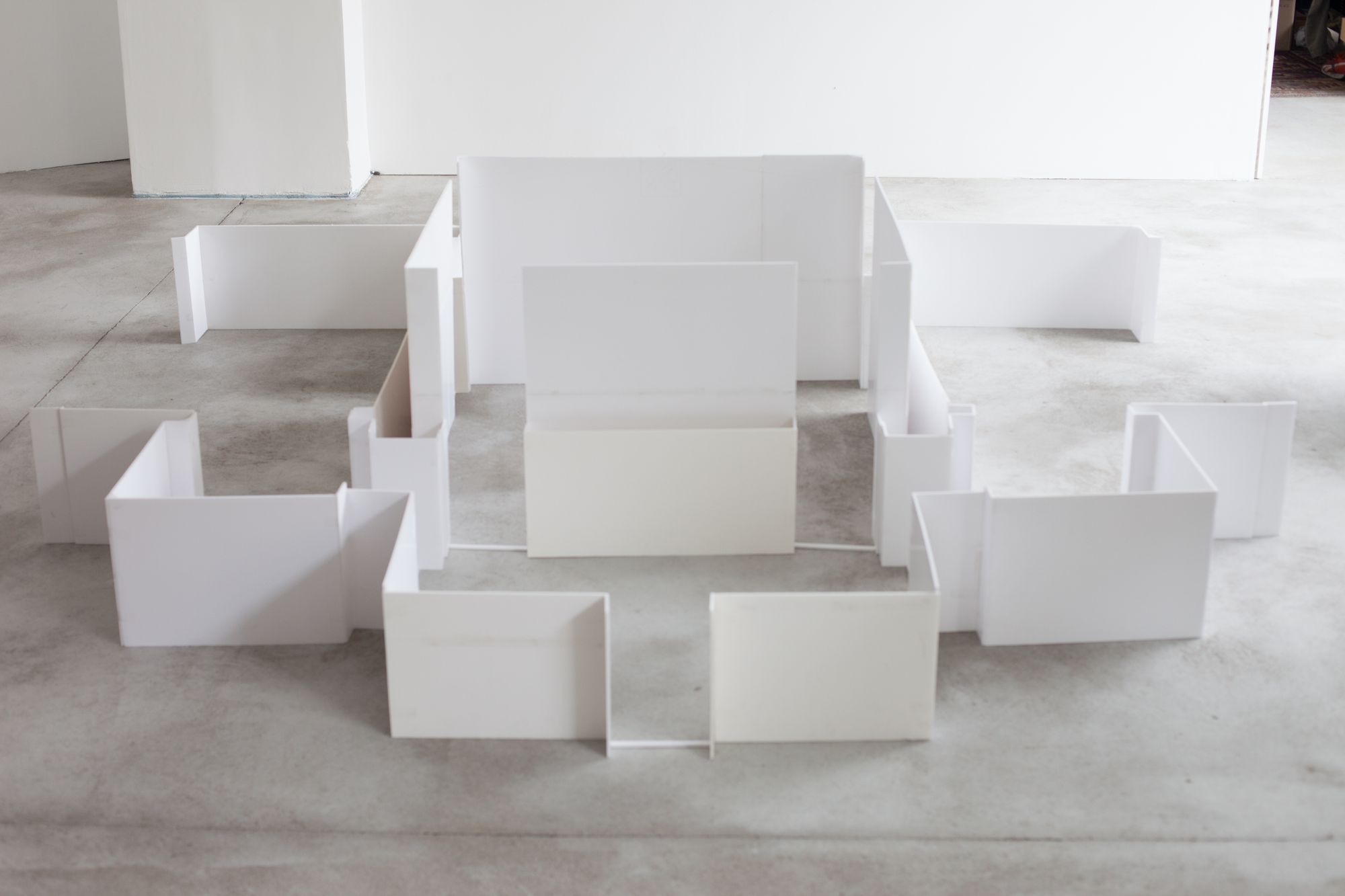
Serpentine Gallery, London W2 3XA, 2010.
In an interview you mentioned how as a teenager you would make the 60-mile round trip from Remscheid, where you grew up, to Cologne to get the latest issue of i-D magazine. Sustaining that kind of curiosity requires real discipline. You’ve also talked about how publishing stories in magazines with limited page counts helped you make your work more concise. What’s your relationship to constraint? Do you look for restrictions when you’re making work?
I have a natural affinity for constraints of the kind you mentioned. One example is the paper formats that Kodak and Fuji used when I started, which have been a constant in my work for over 30 years now — the 12 x 16 and 20 x 24 formats, the 4 x 6-inch postcard format of the mini lab prints, and the large-scale paper formats for my inkjet prints. I like to place my images on the carrier, but then not cut the carrier, or the paper. I like to create borders on the paper, which always highlight the fact that this is actually an image on paper — this is an object. But creating constraints artificially seems pointless. I feel that once I’ve settled on something, it’s because it really works. Which is what happened in 2009, when I realized that the newest generation of digital cameras had a chip sensor the same size as the frames on 35 mm film, and I could sort of translate my optical setup onto a new recording medium. I think constraints are important but are a touchy subject when one speaks too knowingly about them.
I was looking at your work Book for Architects, an anthology of some of the many pictures of buildings you’ve taken over the years, which you first showed as a two-channel video installation of stills at the 2014 Venice Architecture Biennale. In an interview about it with Rob Wilson, you said something that really stuck with me, which is that you’d not only photographed things you like but also things you “do not so much like.” I don’t think I’ve ever heard anyone say that they photograph things they don’t like. You were talking about buildings and particularly architecture being a direct correlation to and representation of unfettered global capitalism.
This project was a departure for me, and came together in tandem with a larger one I was working on called Neue Welt. My general point of view tries not to be cynical or to poke fun at things. But with architecture, at the time, when I looked at the period 2008–14 in this new sort of depth, it presented itself around the globe, in all the travels that I made, as this massive, almost violent transformative process that took over cities in every country. I was able to witness the world shifting to a new paradigm of only serving the investor and the developer — architecture that had nothing to do with a larger, more socially considered plan, that was produced in the absence of a societal discussion about what we want our cities to look like, do, and be.
There have been undeniably seismic changes over the last 20 years with respect to architecture, art, and culture more broadly. I think in terms of modernism and the conceptual art of the 1970s, we’ve lost our relationship to feeling. We can see this in architecture over the last four decades too. Most buildings are placeless. It’s now a given that you can go to any major city and encounter the same types of architecture over and over. Which of the many cities you’ve seen do you feel have changed the most in terms of their architecture and their general feeling?
I mean, I’ve only been once, so I can’t tell from my own experience, but last week I read about the destruction of Jeddah in Saudi Arabia. I went exactly ten years ago and took some photographs of the shocking, willful neglect of beautiful buildings in the landmark old town. It’s an area which has since had much of its soul ripped out. When did what we recognize again with great clarity as the “new now” actually start? Looking back, I think it all started between 1998 and 2002. What endlessly fascinates me is the question of where these developments come from. And thinking about what the buildings were before I noticed them.
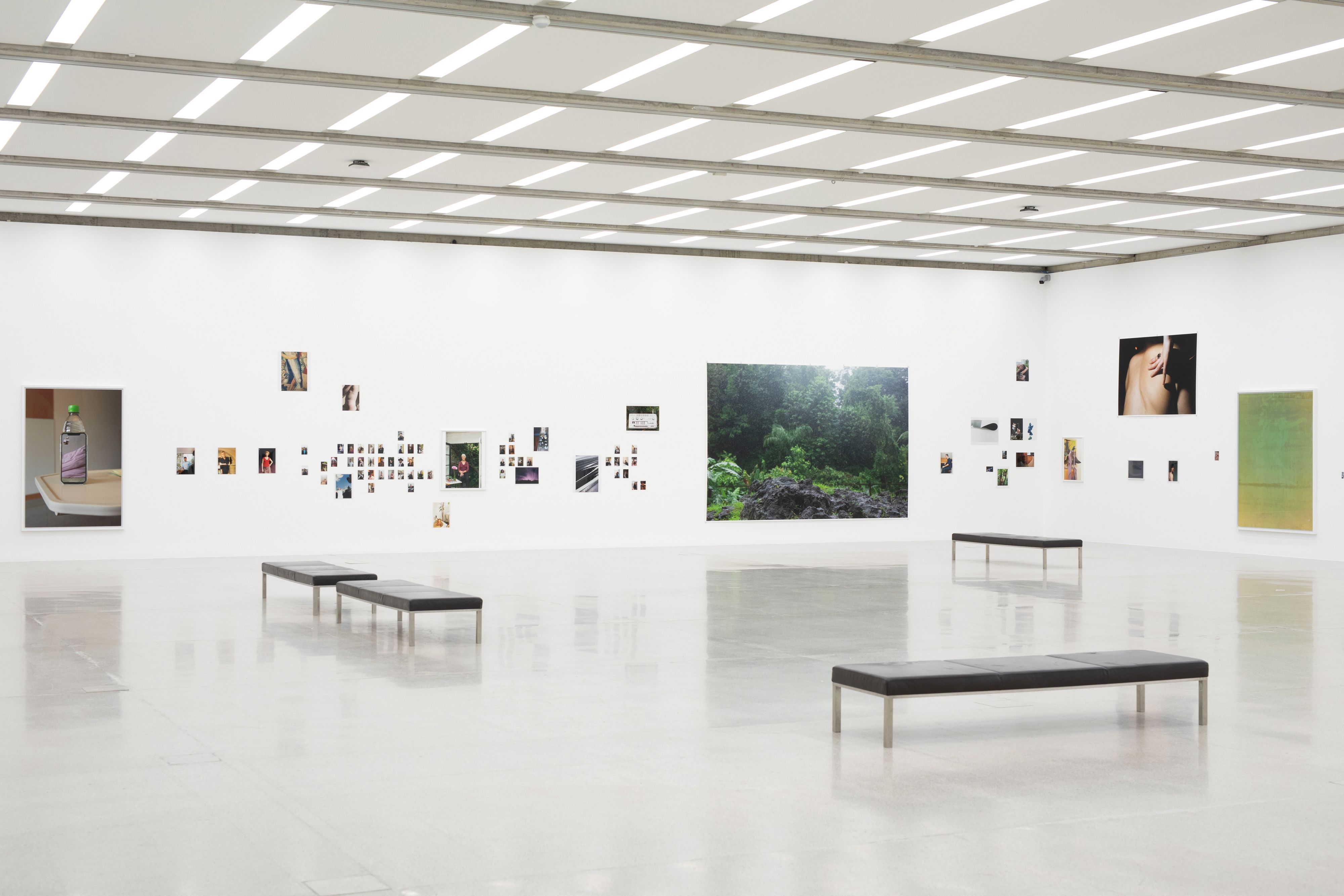
Tillmans's exhibit Sound is liquid in 1070 Vienna.
What’s your relationship to the technical aspects of photography?
I don’t know how old I was, but I when learned what refraction is, what happens when a ray of light hits glass and how different wavelengths within that ray of light are deflected to different degrees to create chromatic aberration, it changed everything for me. Over some 200 years of lens-making, technicians, scientists, and opticians have worked on correcting refraction differences between distinct colors to create a sharper, clearer color picture. And obviously the other fascination is how those rays of light of different frequencies hitting film and paper are photo-chemically translated into colored dyes that read as a picture of reality to us. As a young person, it’s super important to be exposed to the fundamentals of optics. It’s something that I really find troubling about the medium today — the fact that 90 percent of humanity are “photographers” with constant access to the camera in their phones, but they don't have that knowledge. Photography has become embedded in the global experience.
What’s your relationship to scale in space?
From the outset, I used a 4 x 6-foot size, which is consistently present throughout my practice, but then it shifted to be more 4.5 x 7 feet. I started making this size alongside the smaller C prints, but printed my large prints on inkjet paper, which at the time no one did. It was not a stable way of working. People were experimenting with it as a medium, but I used a conventional photocopy-shop machine. I mean, it wasn’t a conventional machine because it was newly invented by Canon — the Bubble Jet Copier A1 [which launched in 1988]. It’s maybe not so relevant to go into such detail, but…
No, it is.
It’s just interesting that for me, I felt it was so important to have a large picture in this space but without the reflection of the glass in the frame, without the heaviness of the large-scale photography that was around at the time. I was alone in doing that. The inks were not stable because the printer wasn’t designed to be an art medium. I wanted people and collectors to trust the work, to hang it unframed in their homes and not be worried that it might fade, or that a child would touch it. So I accompanied it with a certificate of authentication and the original smaller print that I used to enlarge it from, with instructions on how to reprint it in case of damage. Today’s conversation around reprinting is interesting, because it focuses on art photography and the ethics around it with great intensity. But, 30 years ago, I declared this part of my artistic intention — that the prints won’t be signed but the certificate will. By 1995, I was making very large-scale inkjet prints like one of Smokin’ Jo that was 3½ meters tall, but it still had this lightness of touch to it. The largest print I ever did is was made for the installation Science Fiction/Hier und jetzt zufrieden sein in collaboration with Isa Genzken — a copy of Wake measuring 5 x 8 meters. The unframed photograph — and this you get when you directly expose the materiality to the eye and to the elements — may be the sort of hallmark of my installation practice. But, after ten years, I decided to exhibit framed works too.

New wall in On the Verge of Visibility in 4150-417, Porto.
You lived in Berlin and London for a long time, as well as New York for a year in 1994. What is your relationship to these cities?
I’ve had a home in London since 1998. For ten years before settling, I had been thinking very much about the cities I lived in and the impact they had on the work I do. I moved almost every two years, from Hamburg, to Bournemouth, to London, to New York, then briefly to Berlin, but after three months I ran away back to London, then briefly to Cologne before returning to London, where I’ve now lived for over 20 years. Being German, I kept a keen eye on what was happening in Berlin after the Wall came down. I always kept in touch with the place and its people, and I consistently made work there. People often assume that I have a deeper connection to it, but I first got a space there in 2004, and then I got more engaged with it and rented a studio there in 2007. In 2011, I moved almost the entirety of my studio to Berlin, with just a small part remaining in London. Now I’m much more in Berlin, but in my heart I will always be a Londoner.
What’s your relationship to the architecture of London?
London’s center is such a patchwork with no master plan. It’s chaotic and jarring and I find that very stimulating. It speaks to me architecturally because of its fashion and pop cultural sensibility, embracing everything at once — there’s something human about it as a place. For every Richard Rogers masterpiece, such as the Lloyd’s building, there are a lot of not-very-outstanding examples of 1980s architecture. A city like Paris had a grand architectural plan, and of course Berlin also has this strict rule where buildings can only be 23 meters high with a closed façade on the street. In Germany, things are always built with longevity in mind, or at least they used to be. What I love about cities is how they’re a depository of time — and of the aspirations of the period. The people who designed and constructed these buildings believed their work was the best expression of a built environment. But of course, ten years later, that ideal looks completely different because the Zeitgeist has changed. I realize that, with time, I grow to be more forgiving. For example, when COVID-19 and the lockdown hit Berlin two years ago, you were allowed to go for walks as long as you wanted. And so, I walked forever, and because it was winter and there were no leaves on the trees, I very actively studied buildings. I realized how many 1990s Postmodernist buildings there are with mint-green façades, and how at the time I was really critical of them. Now I realize they must have felt like a real departure — “Hey, we can use different shapes in one building and conflicting forms and colors.” They look so different from all the gray grid structures that are being built now.
You once said that you think of spaces in terms of melody. Did you mean this audio-visually or in terms of harmony and flow?
No, I’ve never encouraged people to carry a headset around the space. Even though I listen to a lot of music when installing exhibitions, I have never made speakers part of the exhibition. In 2009, for the Venice Biennale, I made a soundtrack of other musicians’ music for the installation I did, but after running a test before the opening, I decided to switch it off because it felt…
Overwhelming?
Yeah, because when people walked into spaces where I worked, they thought, “Oh, it’s so beautiful to have it with music,” but they experienced it as this sort of coincidence. But, in 2020, I had an exhibition at WIELS in Brussels, and there I had a large-scale video installation with 27 minutes of my own music, with a light curtain made from a thin aluminum material that let sound through. For the first time, I actively wanted to incorporate sound that drifted into the adjacent space. That’s where I’m now working from conceptually, and sound has become a fully integrated part of my work.
When do you know that you should take a photo? Some photographers are only interested in capturing specific subjects once they reach a certain kind of success. What does photography mean to you now?
The meaning of the camera and photograph for me have never been static. I feel like I continuously question it in my practice and as technology evolves. In 2015, I introduced a performative element into my work with the video Instrument, where for the first time I’m in front of the camera. Engaging in other forms of expression has not made photography less potent for me. Spending time thinking about other practices and working in different fields, like when I did stage design for an opera in London, has helped me avoid festering in photography. Not focusing solely on photography has kept it alive for me. It’s taught me how to maneuver, to move forward, and it’s allowed for a kind of fluidity, especially over the last ten years. I recently had a show in L.A. at Regen Projects with new photography that wouldn’t have existed two years ago because of all of the things I’ve learned since. There was a film with a soundtrack of my album, Moon in Earthlight, which I also wouldn’t have done five years ago.
Did photography drive you to politics?
The question of representation — of why and how to depict a person — is not new. It was very much at the core of the discourse and my thinking in the 1990s. What purpose does a picture serve? In the early 90s, I didn’t see a person like myself represented in the media, in photography. I wanted to present an alternative to the mainstream depiction of young people, and I wanted to be taken seriously without being pigeonholed as a young person. By the late 90s, marketing interests had dramatically shifted and had started targeting young adults and teenagers but using the style that I helped create in the early 90s. So I had to shift the focus of my work. I felt that, by the end of the 90s, there was a huge proliferation of picture-making. Because of that, I found ways of slowing down and questioning or shifting the types of photographs I made. On the other hand, a portrait is a portrait — it’s an incredible sort of human exchange and its potential is endless. [Laughs.] Last week, I made a good portrait, and I thought, “Oh my god, you haven’t done this in three months.” It’s very difficult to make a good portrait — there are millions and millions out there — but it’s a particular art form because it 100-percent translates what you think about the person and what you think about the situation. All the dynamics are so readable.
Being a witness to someone else’s beauty and sharing it with them and the world is a singular feeling.
Yes.

After Venice, Peder Lund, Oslo, 2022 in 10969 Berlin.

Moderna Museet, 111 49 Stockholm and Kunsthalle, 8005 Zürich, 2012.
To switch gears, your work is my screen saver on my iPhone [shows image to Wolfgang]. When is this image from, and what does it mean to you?
It’s from 2000. It’s called, I don’t want to get over you, and is one of a small group of specific works that I call “intervention pictures” because they are camera-made photographs that I altered manually with light in the darkroom. In this case, it’s a landscape out west in Nevada. Yours is a detail. During the process of enlarging the picture in the darkroom, I used light sources to draw on the picture — that’s what the green on the image is. It’s actually not a representation of something through the camera, but it’s literally light I exposed it to. The other work is called Icestorm, which is this red color on a yellow landscape, which is the cover of the upcoming MoMA catalogue [the retrospective Wolfgang Tillmans: To look without fear will open in September 2022]. It’s a very powerful group of pictures, made between 1999 and 2001, maybe 2002, I believe.
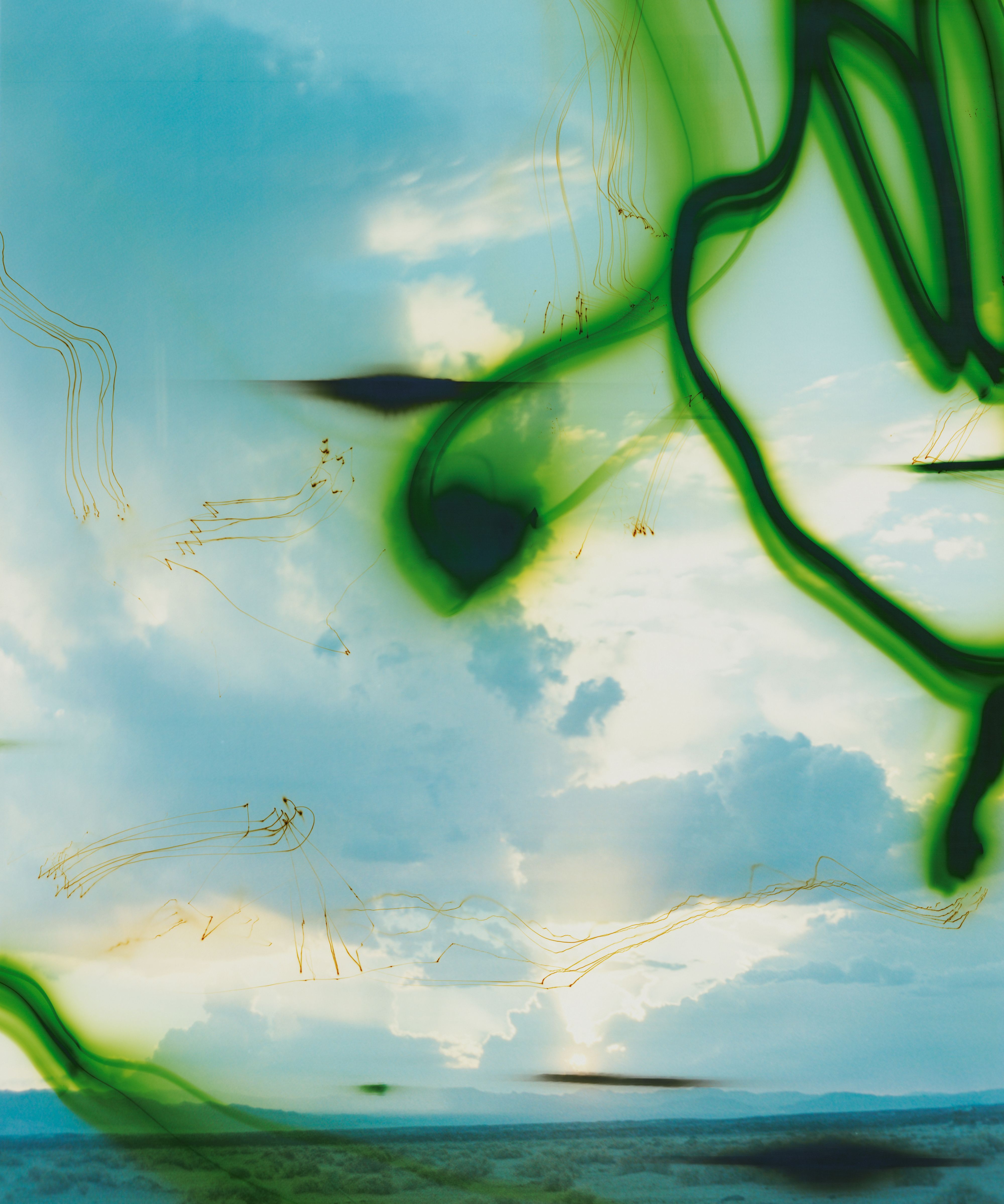
I don’t want to get over you, 2000.
What kind of show would you have done at MoMA if it was just one room?
I did that in 1996. I was in the annual exhibition called New Photography, where they brought together five or six different artistic positions in photography. In my room there were a lot of works on two walls, and a very sparse hang of only four photographs on the other two walls, with each wall having a different rhythm or structure. In the upcoming one, there are twelve rooms covering 35 years or so of work. And each room, of course, has to somehow feel different…
Right. Each room is its own song.
[Laughs.] A friend and brilliant author, Julie Ault, wrote an essay on my work called The Subject Is Exhibition, which she began with a Neil Young quote, “It’s all one song,” which he said to a fan who requested a specific song at a concert. It’s all truly one song.